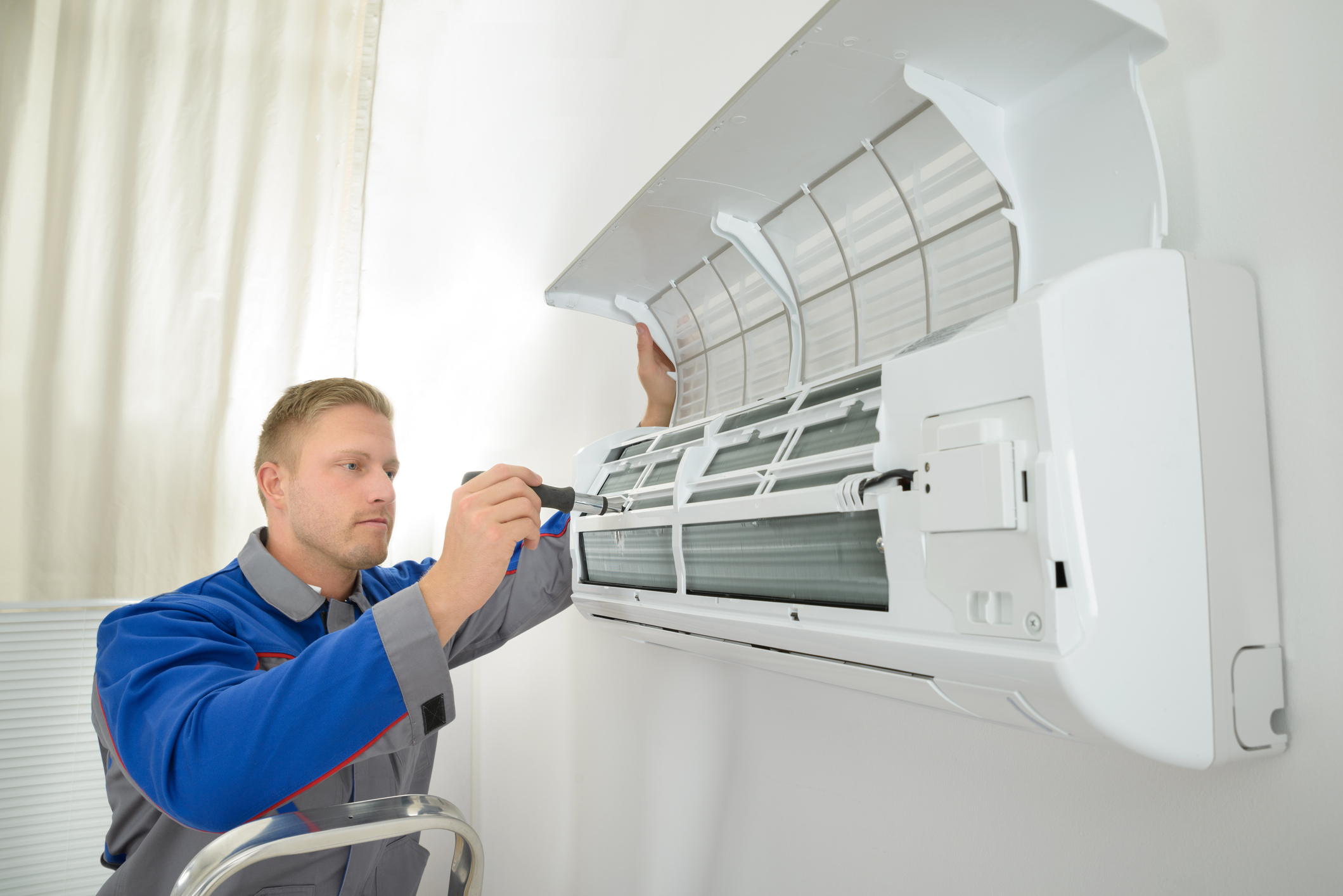Are you interested in becoming an HVAC technician and want to know some of the terms that you will learn during an HVAC program? By the end of this article, you will be able to talk like a professional HVAC technician. The next step is to attend the HVAC program at CyberTex.
What are Some Common HVAC Terms That You Should Know?
There are many HVAC terms that you will learn about in an HVAC program at CyberTex. Here are a few common HVAC terms that you should know:
ABS (Acrylonitrile Butadiene Styrene): This is a type of plastic piping used for waste, drain, and vent applications. It’s appreciated for its strength, temperature resilience, and resistance to impact.
Aerator: A device typically attached to a faucet that mixes air with water. It helps reduce splashing, conserves water, and often improves water pressure.
Angle Stop: A shutoff valve, found under sinks or toilets, that controls the water flow to these fixtures. It’s angled 90 degrees, hence the name.
Air Gap: A safety feature designed to prevent backflow of dirty water into clean water supplies. It’s often seen in dishwashers and sinks.
Air Handler: the indoor part of an air conditioner or heat pump that moves air throughout the ventilation in a structure.
Adapter: A fitting that connects pipes of different sizes or materials together, ensuring a seamless flow within the system.
Anode Rod: A sacrificial rod made from magnesium or aluminum with a steel core, found in water heaters. It’s designed to corrode instead of the water heater tank itself.
Auger: Often known as a plumber’s snake, an auger is a flexible tool used to dislodge clogs in drains and pipes.
Atmospheric Vent: A type of exhaust system that uses air from the surrounding environment to assist in venting waste gases from appliances like water heaters.
Air Lock: A blockage in a pipe caused by an air bubble, often resulting in reduced or stopped water flow.
Air Admittance Valve: A one-way valve designed to allow air to enter a drainpipe for proper venting, while preventing sewer gases from escaping into a building.
Auxiliary Drain: Secondary drainage system typically seen in air conditioning units to prevent water overflow if the primary drain is blocked.
Adjustable Wrench: A commonly used tool in HVAC, whose jaw width can be adjusted to grip nuts and bolts of different sizes.
Anti-Scald: A feature often seen in faucets and shower valves that prevents water from reaching dangerously high temperatures.
Balancing Valve: A valve used in a heating or cooling system that accurately controls the amount of water flow to various parts of the system for optimal performance.
Barb: A section of pipe with a rough edge used to connect hoses in an HVAC system.
Boilers: a device that heats water and provide hot steam for heating. The steam is distributed by pipes to a steam radiator.
Bushing: A fitting used to connect pipes of different sizes.
Check Valve: A type of valve that allows fluids to flow in one direction but closes automatically to prevent flow in the opposite direction.
Chiller: a refrigeration system used to lower the temperature by removing heat from the system and transferring it outside.
Compressor: part of an air conditioner or heat pump that compresses and pumps refrigerants to cool the inside of a structure.
Condensate: The water produced when air is cooled by an air conditioner or heat pump.
Coupling: A short fitting used to join two pieces of pipe.
CPVC (Chlorinated Polyvinyl Chloride): A type of plastic pipe used in HVAC systems for the distribution of hot and cold water.
Cut-off Valve: A valve that completely stops the flow of water through a pipe.
Dampers: Devices used in ductwork that regulate air flow.
Decibel: A unit used to measure the intensity or loudness of sound.
Deliming: The process of removing lime scale buildup from a boiler, water heater, or any HVAC fixture.
Dielectric: A type of fitting designed to prevent corrosion caused by dissimilar metals touching.
Direct Vent: A method of venting exhaust gases from an appliance directly outside, without using a chimney.
Drain Valve: A valve at the bottom of a water heater that allows the tank to be drained for maintenance or replacement.
Drip Leg: A pipe installed at a low point in a gas piping system to collect and remove condensation or foreign material.
Dual Element Water Heater: A water heater with two heating elements that provides a quicker recovery time.
Expansion Tank: A tank designed to absorb excess pressure due to thermal expansion in a closed water heating system.
External Vent: A vent that leads outside to allow gases to escape safely from your home.
Fitting: A general term for any piece that joins together sections of pipe.
Flare Fittings: Fittings used to connect pipes made of different materials, often used in gas piping.
Galvanized Pipe: Steel pipe that is coated in zinc to resist corrosion.
Heat Exchanger: A device in a boiler or furnace that transfers heat to the surrounding air or water.
Heat Pump: A device that uses electricity to transfer heat from a cool area to a warm area.
ID (Inside Diameter): The measurement of the inside diameter of a pipe, which determines the volume of fluid the pipe can carry.
Impeller: A rotating part of a centrifugal pump or compressor that moves fluid by rotation.
Joint: The location where two sections of pipe or HVAC components are connected.
Jacket: The outer shell of a water heater or boiler that protects the insulation from physical damage.
Jumper: A short length of conductor or flat metal used to bypass a portion of an electrical circuit.
Kilopascal (kPa): A metric unit of pressure measurement.
Pressure Regulator: A valve that automatically cuts off the flow of a liquid or gas at a certain pressure.
Relief Valve: A safety valve that releases excess pressure.
Roof Vent: A pipe that allows gas to escape from your home’s plumbing system.
Sleeve: A pipe that is passed through a wall for the purpose of inserting another pipe through it.
Tankless Water Heater: A type of water heater that heats water directly without the use of a storage tank.
Threaded Fitting: A type of fitting that screws onto the threaded end of a pipe
Zone: In the context of HVAC systems, a zone is a space or group of spaces within a building with heating and cooling requirements that are sufficiently similar so that desired conditions can be maintained throughout using a single controlling device.
Zone Valve: A device, usually placed near the heater or cooler, which controls the flow of water or steam to parts of the building.
Zone System: A method of controlling the distribution of heating or cooling in a system by dividing a home into zones controlled by separate thermostats.
HVAC Technician Diploma
Ready to start a rewarding career as an HVAC technician in Texas? With more than two decades of success in the medical, health, and IT sectors, we added an HVAC course to our curriculum. We are proud to announce that we have flexible day and evening classes for the HVAC program.
CyberTex’s HVAC program can be completed in as little as 11-month attending full-time with the flexibility of day and evening classes. You will be eligible to take the EPA – 608 certification from the US Environmental Protection Agency with our training.
Want to learn more? Contact us today.





